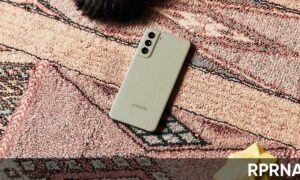Samsung Galaxy Note 20 series is one of the best Android smartphone lineups as it comes with powerful processors, versatile cameras, big batteries, great screens, and good performance.
JOIN SAMSUNG ON TELEGRAM
Obviously, with technology, they can experience problems from time to time. Using the most common Samsung Galaxy Note 20 and Note 20 Ultra issues, we explained why they are most likely to occur and explained exactly what you need to do to resolve them.
As with most smartphones, some issues can be quickly resolved by installing a new software update (if any). You can also try doing a factory reset but only after exhausting all other possible solutions.

Samsung Galaxy Note 20 Ultra: Network Problem
Except for a few people who reported that their Note 20 Ultra is having problems with the mobile network connection. In most cases, users cannot receive any type of mobile network signal, even though others may report a one-time connection but discard it.
Possible solutions:
- Try restarting the phone. This has worked for some users.
- Try turning off Wi-Fi Calling off you have this setting switched on. Go to Phone > More > Settings > Wi-Fi Calling.
- Clear your Note 20 Ultra’s cache. You can do this by booting up your phone in recovery mode.
- If possible, try a different SIM card and/or network on your phone. This may help determine whether you have a phone or network issue on your hands.
- Switch from 5G to 4G. Go to Settings > Connections > Mobile Networks > Network Mode > 4G/3G/2G (Auto Connect).
- Reset the Access Point Names for your network. Go to Settings > Connections > Mobile Networks > Access Point Names > More > Reset to Default.
Samsung Galaxy Note 20 and Note 20 Ultra: Overheating Issue
This issue is often the most common touch issue on all smartphones, but if it is because of its high output, it looks like the most common touch issue on the Note 20 Ultra.
Overheating seems to be a problem when using the camera app and users complain that using the camera for more than a few minutes will cause the temperature of the phone to rise.
Possible solutions:
- Avoid overusing the phone in high temperatures and/or direct sunlight. This can really incite any tendencies it may have to overheat.
- Do not film video in 8Kor 4K for too long. Take breaks if you need to shoot longer stretches of 8K/4K footage, or try filming only in 1080p.
- Erase battery-draining apps from your Note 20 (Ultra). This includes apps that promise to enhance performance or battery life, as well as apps that tend to run in the background. Social media apps (Facebook, Snapchat, Twitter, Tinder) are often big offenders in this respect, so get rid of any you no longer use.
- Try clearing the cache for any app you believe may be causing the overheating. To do this, go to Settings > Apps > [App] > Storage > Clear Cache.
- Some users recommend wiping your phone’s system cache (via recovery mode) or even performing a factory reset if the problem doesn’t resolve itself. However, make sure you back up your phone before performing a factory reset.

Samsung Galaxy Note 20 and Note 20 Ultra: Battery draining issue
Given that they can run at such high speeds, it might not be surprising to hear some users complaining about their fast-charging batteries. Some people reported that their Note 20 battery lasted overnight, while others noticed that they had problems after upgrading to Android 11.
Possible solutions
- Wipe the phone’s cache partition via recovery mode. Switch off the phone, then press and hold the Power and Volume Up buttons. Release them when you see the Samsung logo. Then use the volume buttons to scroll through the options until you reach Wipe Cache Partition, which you can select by pressing the Power button.
- Try resetting your app preferences. Go to Settings > Apps > More > Reset App Preferences.
- Disable scanning for Wi-Fi and Bluetooth. Go to Settings > Location > Improve Accuracy > Disable Wi-Fi Scanning. Then select Disable Wi-Fi Scanning.
- Switch off background data and activity for less-important apps. You can do this by going to Settings > Apps > [App] > Mobile Data > Allow Background Data Usage > Off. Then do the same again, but after picking an app, go to Battery > Allow Background Activity > Off.
- Try turning on adaptive brightness for your display. Go to Settings > Display > Adaptive Brightness.
- It’s also worth turning on battery optimization. You can do this by going to Settings > Device Care > Battery > Power Mode > Optimized. Also activate Adaptive Power Saving on the same screen.
Stay Tuned…














